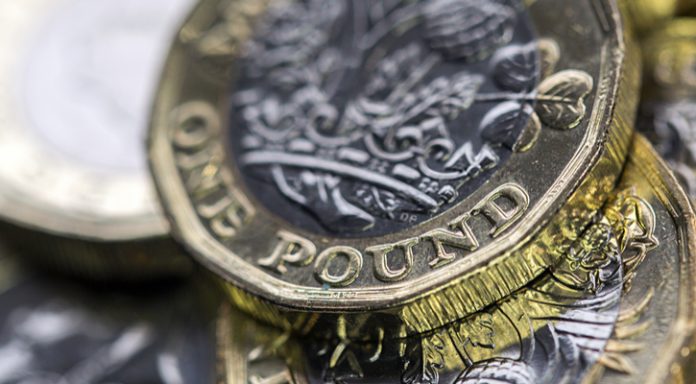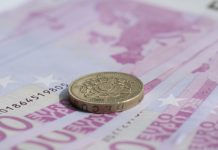- Pound (GBP) falls for a third straight day
- UK economy grew 0.2% MoM in January
- Euro (EUR) rises after ECB commentary
- Eurozone industrial production fell 3.2%
The Pound Euro (GBP/EUR) exchange rate is falling for a third straight day. The pair fell -0.17% in the previous session, settling on Tuesday at €1.1705 and trading in a range between €1.1668 to €1.1733. At 10:00 UTC, GBP/EUR trades -0.08% at €1.1695.
The pound is inching lower for the third straight day despite GDP data pointing to the UK returning to economic growth.
The latest data from the Office of National Statistics showed that the UK economy grew 0.2% in January, in line with expectations, after contracting in the previous month.
The data shows that the service and construction sectors offset weakness in the manufacturing sector, helping the UK economy recover from a recession at the end of last year.
Data comes after figures yesterday showed some weakening in the UK jobs market after unemployment unexpectedly ticked higher to 3.9% and wage growth slowed to its lowest level in two years.
The Bank of England policymakers will weigh up these data points ahead of the next monetary policy meeting. However, the central bank is not expected to cut rates until August, given that inflation is still double the Bank of England’s 2% target.
The euro is pushing higher, supported by ECB commentary, which points to an interest rate hike in June rather than April.
ECB policy maker and French central bank president Francois Villeroy de Galhau said that he considered a June rate cut to be more appropriate than April. Meanwhile, Austria’s central bank chief Holzman, echoed this thought saying that an April rate cut would be premature.
The ECB left interest rates on hold in the meeting last week, downwardly revising inflation and growth forecasts. ECB President Christine Lagarde also pointed to a June rate cut.
On the data front, industrial production fell 3.2% month on month, well below the -1.5% forecast and after a 2.6% rise month on month in December.





